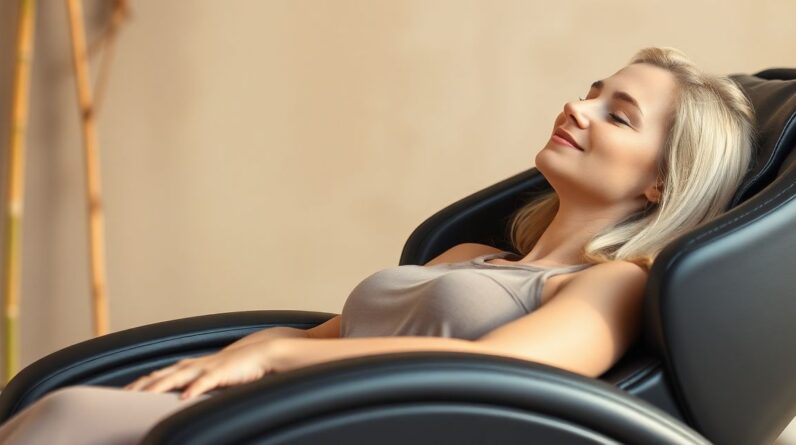
Are you feeling stressed out? Looking for a way to relax and unwind? Well, have you ever considered trying yoga for stress relief? There is a relationship between stress management and yoga. It’s not just a trendy exercise, but a practice that can truly help calm your mind and body. In fact, yoga has been shown to reduce stress and anxiety, thanks to its combination of physical movement, breathing exercises, and meditation. In this article, we’ll explore the different aspects of yoga that can help you find inner peace and relaxation. Whether you’re a beginner or experienced yogi, you’ll learn some valuable techniques to incorporate into your routine, both on and off the mat. So, let’s dive in and discover the wonderful world of yoga for stress relief!
In yoga, you’ll find a variety of tools to help combat stress. From the physical postures, which promote relaxation and improve flexibility, to the breathing exercises that can calm your nervous system and encourage mindfulness, each aspect of yoga plays a unique role in stress reduction. Additionally, research supports the effectiveness of yoga for stress relief, showing reductions in stress, depression, and anxiety. So, if you’re feeling overwhelmed or tense, practicing yoga could be just what you need to find some inner peace. Throughout this article, we’ll explore specific poses, breathing techniques, and meditation practices that can help you release negativity, improve sleep, and find a sense of calm in your day-to-day life. However, before beginning any new exercise routine, it’s important to consult with your doctor, especially if you have any underlying health conditions. So, let’s get started and learn how yoga can bring a little more tranquility into your life!
Table of Contents
Yoga for Stress Relief
Yoga is a popular practice that can help reduce stress and anxiety. It offers a holistic approach to wellness by combining physical postures, breathing exercises, meditation, and relaxation techniques. Practicing yoga regularly promotes mental and physical relaxation, relieves tension, and improves flexibility. In this article, we will explore the stress relief benefits of yoga, the different breathing exercises used in yoga, specific yoga poses for stress relief, meditation techniques, and how to incorporate yoga into your daily life.
Stress Relief Benefits of Yoga
Research has shown that yoga can be effective in reducing stress, depression, and anxiety. The practice of yoga involves focusing on the breath, moving the body, and calming the mind. These actions help activate the parasympathetic nervous system, which promotes relaxation and reduces the body’s stress response.
Reduction in Stress
One of the main benefits of yoga is its ability to reduce stress. Through the combination of physical movement and mindful awareness, yoga helps release tension and promotes a sense of calm. Regular practice of yoga can lead to lower levels of the stress hormone cortisol and an overall decrease in stress-related symptoms.
Reduction in Depression
Depression is a common mental health condition characterized by persistent feelings of sadness, hopelessness, and a lack of interest in activities. Yoga has been shown to be an effective complementary treatment for depression. The physical postures, breathing exercises, and meditation in yoga promote relaxation and can help improve mood and well-being.
Reduction in Anxiety
Anxiety is a condition characterized by excessive worrying, fear, and a heightened state of arousal. Yoga has been found to be effective in reducing anxiety symptoms. The deep breathing exercises and meditation techniques in yoga help activate the body’s relaxation response, leading to a decrease in anxiety and an increase in feelings of calm.
Breathing Exercises in Yoga
Breathing exercises, also known as pranayama, are an essential component of yoga practice. These exercises focus on regulating breath, reducing stress, and encouraging mindfulness. Deep breathing helps activate the parasympathetic nervous system, promoting a state of relaxation and calmness.
Regulating Breath
One of the fundamental breathing exercises in yoga is called “diaphragmatic breathing” or “belly breathing.” This technique involves inhaling deeply through the nose, allowing the belly to rise, and exhaling fully through the mouth, allowing the belly to fall. This type of breathing helps regulate the breath and activates the body’s relaxation response.
Reducing Stress
Specific breathing exercises, such as “alternate nostril breathing,” can help reduce stress and anxiety. This technique involves inhaling deeply through one nostril while closing the other nostril with a finger, then exhaling through the opposite nostril while closing the other nostril. This alternating breath helps balance the nervous system and promotes a sense of calm.
Encouraging Mindfulness
Mindful breathing exercises, such as “counted breath” or “square breathing,” can help cultivate mindfulness and present-moment awareness. These exercises involve inhaling for a certain count, holding the breath for the same count, exhaling for the same count, and holding the breath out for the same count. This rhythmic breathing helps focus the mind and bring awareness to the breath.
Yoga Poses for Stress Relief
Certain yoga poses are particularly effective in releasing tension, reducing stress, and promoting relaxation. Here are four poses that can help alleviate stress and anxiety:
Cat-Cow Pose
Cat-Cow Pose is a gentle sequence that involves moving the spine through flexion and extension. Start on your hands and knees, with your wrists directly under your shoulders and your knees under your hips. On an inhalation, arch your back, lifting your chest and tailbone towards the ceiling while dropping your belly towards the floor (Cat Pose). On an exhalation, round your spine towards the ceiling, tucking your chin towards your chest and drawing your belly button towards your spine (Cow Pose). Move slowly and mindfully through this sequence, focusing on the breath.
Child’s Pose
Child’s Pose is a restful pose that promotes relaxation and deep breathing. Begin on your hands and knees, then bring your hips back towards your heels as you lower your forehead towards the floor. Extend your arms forward or rest them alongside your body. Allow your breath to deepen as you surrender into the pose, releasing tension and stress.
Legs-Up-the-Wall Pose
Legs-Up-the-Wall Pose is a gentle inversion that helps calm the nervous system and promote relaxation. Sit sideways next to a wall with your legs extended along the wall. Lower your torso to the floor as you swing your legs up the wall. Rest your arms alongside your body or place your hands on your belly or chest. Close your eyes, relax your body, and focus on the breath as you enjoy the rejuvenating effects of this pose.
Corpse Pose
Corpse Pose, also known as Savasana, is the final relaxation pose in a yoga practice. Lie flat on your back, with your legs extended and your arms relaxed at your sides. Close your eyes and allow your body to completely release into the floor. Focus on consciously relaxing each part of your body, from your toes to your head. Remain in this pose for several minutes, allowing yourself to experience deep relaxation and tranquility.
Meditation for Stress Relief
In addition to physical postures and breathing exercises, meditation is a powerful tool for stress relief. Meditation involves focusing the mind and cultivating a state of inner calm and stillness. Here are a few meditation techniques that can promote stress relief:
Yoga Nidra
Yoga Nidra, also known as “yogic sleep,” is a guided meditation technique that involves deep relaxation and conscious awareness. During Yoga Nidra, you lie down in a comfortable position and follow the instructions of a guided meditation. This practice helps release physical and mental tension, promoting a deep state of relaxation and reducing stress.
Deep Relaxation
Deep relaxation meditation involves consciously relaxing each part of the body while focusing on the breath. Find a comfortable position, either sitting or lying down, and bring your attention to your breath. As you inhale and exhale, imagine a wave of relaxation flowing through your body, releasing any tension or stress. Allow yourself to surrender to the present moment and fully embrace the feeling of relaxation.
Improving Sleep Quality
Practicing meditation before bedtime can help improve the quality of your sleep. Engaging in a soothing meditation practice can calm the mind, release tension, and promote a restful night’s sleep. By incorporating meditation into your nightly routine, you can create a peaceful and tranquil environment for optimal sleep and stress relief.
Incorporating Yoga into Daily Life
The benefits of yoga extend beyond the physical practice on the mat. By incorporating yoga into daily life, you can experience stress relief and overall well-being. Here are a few ways to bring the principles of yoga into your everyday routine:
Releasing Negativity
Yoga teaches us to let go of negative thoughts and emotions. Whenever you notice stress or negativity arising, take a moment to pause, take a few deep breaths, and release any tension or resistance. Cultivating a mindset of gratitude and positivity can help reduce stress and promote a more peaceful state of mind.
Using Stress Relief Techniques off the Mat
In addition to practicing yoga postures and breathing exercises, you can incorporate stress relief techniques into your daily activities. Whenever you feel stressed or overwhelmed, take a few moments to practice deep breathing, mindfulness, or positive affirmations. These techniques can help calm the mind and restore a sense of balance and tranquility.
Consulting with a Doctor
Before starting a yoga routine, it’s important to consult with a doctor, especially if you have pre-existing health conditions. While yoga is generally safe for most people, certain health conditions may require modifications or specific precautions. Your doctor can provide guidance on how to safely incorporate yoga into your wellness routine.
Importance of Consulting with a Doctor
Consulting with a doctor before starting a yoga routine is crucial, as they can provide personalized recommendations based on your individual health needs. They can assess any potential risks or contraindications and ensure that yoga is a suitable practice for you. Additionally, they may be able to recommend specific poses or modifications that are beneficial for your unique circumstances.
Considering Health Conditions Before Starting a Yoga Routine
Certain health conditions, such as injuries, chronic pain, cardiovascular conditions, or pregnancy, may require modifications or caution when practicing yoga. It’s important to inform your doctor about any health conditions you may have and discuss any concerns or limitations you may have regarding yoga. They can help guide you towards a safe and effective yoga practice tailored to your specific needs.
Conclusion
Yoga is a powerful practice for stress relief, offering a combination of physical postures, breathing exercises, meditation, and relaxation techniques. Research has shown that yoga can reduce stress, depression, and anxiety, promoting a sense of calm and well-being. By incorporating yoga into daily life and using stress relief techniques off the mat, you can experience the holistic benefits of this ancient practice. Remember to consult with a doctor before starting a yoga routine, especially if you have any health conditions. Embrace the practice of yoga, and let it be your guide to finding peace, tranquility, and stress relief throughout your journey. Many individuals find that even simple modifications of traditional yoga, such as chair yoga, can provide significant stress reduction. Chair yoga benefits for stress relief can be particularly effective for those with mobility issues or those who spend long hours sitting at a desk. By making yoga accessible and adaptable, practitioners can discover new ways to incorporate mindfulness and relaxation into their daily routines, enhancing their overall mental well-being.





